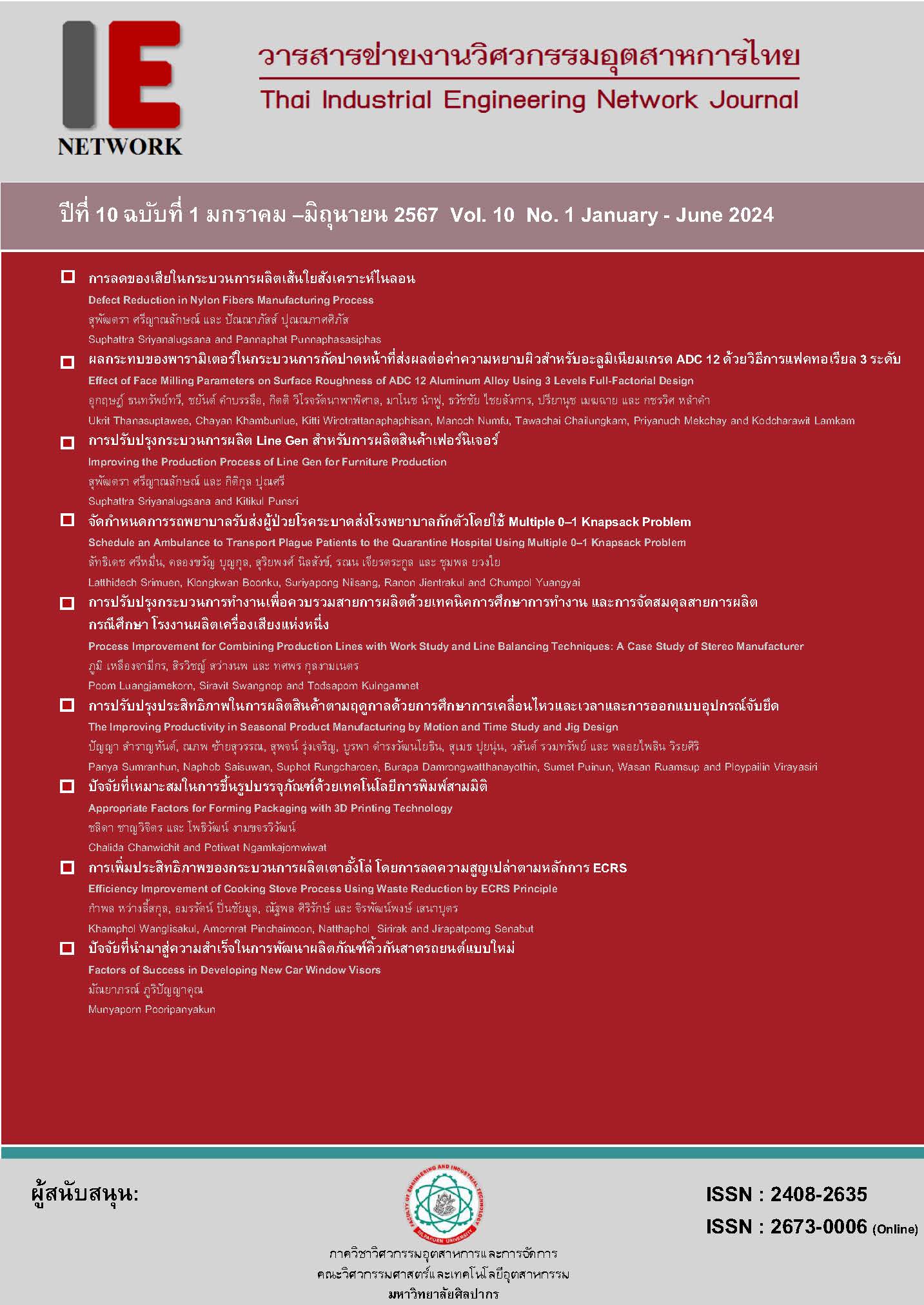Defect Reduction in Nylon Fibers Manufacturing Process
Main Article Content
Abstract
This research aims to reduce the number of defects in the manufacturing process of nylon synthetic fibers. The approach involves using a fishbone diagram to analyze the root causes of the problem, Pareto charts to prioritize the issues, ECRS principles, and factorial experimental design for process improvement. Through data collection and analysis, it was found that the most significant defects were attributed to ‘yarn breaks’ and ‘pack changes’. After using the Fishbone Diagram and brainstorming, it was discovered that the main causes of yarn breaks were related to blockages in the Exhaust Monomer tube, Godet Roller, and Yarn Path. This issue was addressed by refining work instructions, creating inspection sheets, and scheduling regular checks on the Godet Roller. The main reasons for pack changes were found to be the lack of work instructions and the incorrect assembly of the polymer filter following standards. This issue was addressed by reducing the duration of work processes, implementing work instructions, and using Factorial experimental design setups to determine the optimal interval for pack changes. As a result of these improvements, the defect percentage decreased from 6.51% to 5.84%, resulting in an annual cost reduction of 199,800 baht and the potential extension of the improvement methods to other departments.
Article Details

This work is licensed under a Creative Commons Attribution-NonCommercial-NoDerivatives 4.0 International License.
บทความ ข้อมูล เนื้อหา รูปภาพ ฯลฯ ที่ได้รับการตีพิมพ์ในวารสารฯ ถือเป็นลิขสิทธิ์ของวารสารฯ หากบุคคลหรือหน่วยงานใดต้องการนำทั้งหมดหรือส่วนหนึ่งส่วนใดไปเผยแพร่ต่อหรือเพื่อกระทำการใดๆ จะได้รับอนุญาต แต่ห้ามนำไปใช้เพื่่อประโยชน์ทางธุรกิจ และห้ามดัดแปลง


